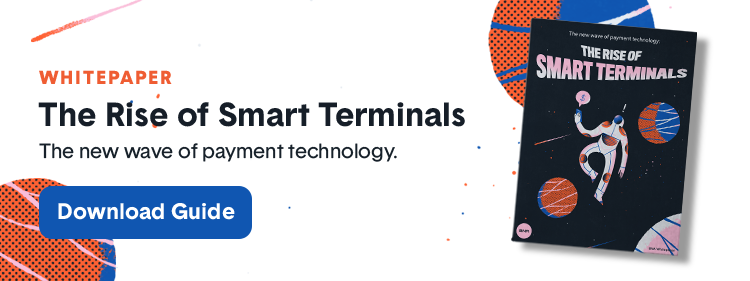When it comes to selling at fairs, festivals, exhibitions, and trade shows, we’re looking at a pay-for-play situation. This means you’re paying to sell your goods at an event.
You have to pay for a booth or table, which can vary in price based on the size of the booth, the length of the event, any advertising you choose, the area the table is in, and other factors. You could be paying $300 for a craft fair or $3,000 for a trade show.
So, right from the start, you’re in the minuses. You have to sell enough inventory to cover the cost of attending the event and more on top of that to make a profit.
Naturally, you don’t want to spend three days at a fair or festival to walk out with less money than you came in with.
That’s why you need to sell more. And we’re here to help you do just that.
Invest in advertisements
A blank booth might be less expensive, sure, but it’ll also mean most people will just walk on by without even glancing your way.
This isn’t good for business.
What you want to do instead is draw people in with your display. That means investing in big, bright signs or even electronic display screens to enhance your visibility in a sea of other vendors.
If you have a small budget, you can even dress up in a costume to attract attention (like dressing up as a carrot if you’re selling organic vegetables at a farmers’ market). Think outside the box here.
Offer refreshments
Another way to get people to your stand, booth, or table is by offering free refreshments, like lemonade or cookies. Again, getting their attention is the first step to selling more. But this is an added expense.
Get the price just right
Once you attract people to your booth, you want to close the deal. This can be tough if your prices are outrageous. Consider not just what time and materials went into making your merchandise, but what your products can actually sell for (which is not necessarily what they’re worth).
Check out your competition and discover what others are charging for similar products. Then, choose your pricing strategy: should you charge more, the same, or less?
What will make people buy?
Ask about their needs
When someone walks up to your table, don’t just talk about your products and how cool the features are. Instead, ask the prospect what their needs, challenges or preferences are. This will help ensure you’re talking up your products in a way that resonates with your audience.
For example, if the customer indicates they have neck pain, you can talk about how your memory foam pillows help reduce the strain on the neck when they’re sleeping (instead of how easy the material is to wash or how soft the pillow is).
Always put the customer first, and you’ll be sure to sell more.
Create a demo
If your product is really impressive in action, then find a way to create and display a demo that’ll not only catch people’s attention at the event but also help you convince prospects to buy.
For example, if you’re selling waterproof socks, then bring a small fountain with you to show that the socks are truly waterproof when held under the water.
Make paying easy
If you only accept cash or cheques, it might turn away willing customers. The truth is many people simply don’t carry these payment types on them anymore.
And whether you realize it or not, payments tie into the customer experience.
People are paying with credit and debit more often these days, which is something you need to consider. Having a cash-only booth might be a deterrent, especially if a competitor offers similar products but accepts card payments. Who do you think the customer will choose to buy from?
It’s easy to sell on the go at a festival, fair, or trade show with a mobile point-of-sale (mPOS) solution. This can either be a card reader that connects to your phone via the audio jack or a tiny payment terminal and downloadable app that accepts payments wirelessly from anywhere.
With an mPOS, you’ll not only be able to accept cash and cheques, but you’ll also be able to accept credit, debit, and possibly even contactless payment types. Your customers will definitely appreciate it.
Sell more with these tips!



